And aerodynamic wire? Forgetaboutit.... I don't think I've seen anyone actually pull that off. I got some RB PE for the SE5 that may be close.
-
Modelers Alliance has updated the forum software on our website. We have migrated all post, content and user accounts but we could not migrate the passwords.
This requires that you manually reset your password.
Please click here, http://modelersalliance.org/forums/login to go to logon page and use the "Forgot your Password" option.
You are using an out of date browser. It may not display this or other websites correctly.
You should upgrade or use an alternative browser.
You should upgrade or use an alternative browser.
Wingnut Wings Sopwith Triplane
- Thread starter moon puppy
- Start date
Heavens Eagle
Well-known member
Yeah, they usually use PE stuff to do it. Thing is there are no real turnbuckles on the late war British aircraft.
paddy
Well-known member
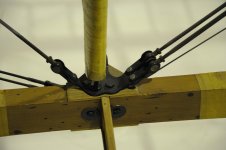
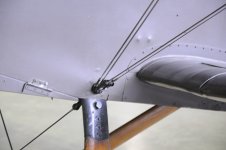
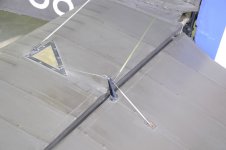
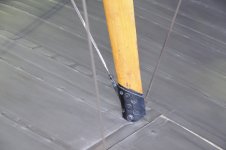
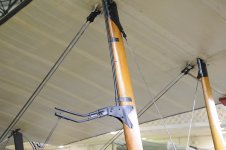
one mistake i made with my WnW builds is the later war stuff as Paul mentioned often only had a turnbuckle on one end so appears in some pictures not to have them at all
TBH its another of those things you can over think and turn a build into a nightmare so best to do what looks good to you. I have dozens of pictures as above that i took at Hendon and its actually quite hard to find 2 fittings the same, the above are all on the same SE5A which is Triplane era ish. the really confusing thing with aero wires is they twist so some look tapered
and others just look different thicknesses
I got several photos from the RAF Museum. But my focus back then was the Albatros, got some really good photos of those turnbuckels. What I'm planning on doing is just using a sleave of brass tube on most of the bracing wires, maybe a tube and eyelet on some at the control horns.
RichB
Well-known member
At the risk of "sharkmouthing" you (@Sharkmouth may not know he is an adjective), "Everything you've wanted to know about Sopwith Triplane rigging and truing but were afraid to ask."
RAF Streamlined Wires
(from 1912 to 1918 RAF referred to the Royal Aircraft Factory when it was renamed to the Royal Aircraft Establishement)
The RAF produced a specification for various wire sizes defining threads, material, cross section, strength and end fittings that aircraft designers could then specify on drawings (AGS XXX). The wires could be made in-house or acquired from supplier. Although called wires they were more like a tie rod, made from asingle length of round stock with each end threaded (one end left hand, the other right hand to prevent loosening) using either British Standard Fine (BSF) and British Association (BA) threads with a square section to fit a spanner for tensioning. The span between the threaded ends was drawn to a symmetrical lenticular shape sized to maintain the original tensile strength of the round stock.
The Triplane used 1/4 BSF and 2 BA RAF wires for external rigging.
Step by step procedure for the Sopwith Triplane from British Military Aircraft of WW1 The Official Technical and Rigging Notes for RFC and RNAS Fighting and Training Aeroplanes, 1914-1918











Cheers,
RichB
RAF Streamlined Wires
(from 1912 to 1918 RAF referred to the Royal Aircraft Factory when it was renamed to the Royal Aircraft Establishement)
The RAF produced a specification for various wire sizes defining threads, material, cross section, strength and end fittings that aircraft designers could then specify on drawings (AGS XXX). The wires could be made in-house or acquired from supplier. Although called wires they were more like a tie rod, made from asingle length of round stock with each end threaded (one end left hand, the other right hand to prevent loosening) using either British Standard Fine (BSF) and British Association (BA) threads with a square section to fit a spanner for tensioning. The span between the threaded ends was drawn to a symmetrical lenticular shape sized to maintain the original tensile strength of the round stock.
The Triplane used 1/4 BSF and 2 BA RAF wires for external rigging.
| NOMINAL DIA | THREADS | CROSS SECTION | |
1/4 BSF | 0.250 in (6.35 mm) | 26 TPI (0.977 mm pitch) | 0.400 x 0.090 in (10.20 x 2.30 mm) |
| 2 BA | 0.185 in (4.70 mm) | 31.36 TPI (0.81 mm pitch) | 0.180 x 0.070 in (4.60 x 1.80 mm) |
Step by step procedure for the Sopwith Triplane from British Military Aircraft of WW1 The Official Technical and Rigging Notes for RFC and RNAS Fighting and Training Aeroplanes, 1914-1918
Cheers,
RichB
Thanks Rich, that document was on the website I stumbled on the other day.
I think I'm about to the point of decaling this thing. I'm almost thinking it's better to have nearly completed components going together than not.
I think I'm about to the point of decaling this thing. I'm almost thinking it's better to have nearly completed components going together than not.
All this dry fitted. All Hail Wingnut Wings!

paddy
Well-known member
its a great shame as during my 45 years in the toolroom we used BSF and BA as std. Towards the end it was becoming " non preferred " by stockists. Eventually we had to go metric on threads and it wasnt just a backward step it was a huge leap backwards. The metric range is a small fraction of the imperial range / options. Even the metric heads are limited..you try and find a metric round head screw.
Heavens Eagle
Well-known member
I get it Paddy, I really do. Here in the US we have our standard, then there is the metrics. As a watchmaker there are a bunch of micro metric threads that seem to have become the standards. I am so used to all of them that I swap between with little trouble. I suspect it will probably stay the way it is for the foreseeable future. Gives more options, and most folks that work on any kind of machinery do like I do and swap around. I even have a couple of mechanical Metric/US dial calipers (6 and 12 inch) The battery ones work and are fairly accurate, but when the batteries die what do you do?
paddy
Well-known member
Yea i get using both gives a wider range however in manufacturing you cant switch between the two, half the holes drilled imperial and others drilled metric. Verniers on all the machine tools, lathes , mills grinders etc in imperial, screw cutting set up with metric lead screws and gearing.
Metric even in Europe is still hard to find and the whole of Europe is metric and always has been.
The other day i had a customer who had sheered a carburettor valve of in his italian Dellorto carb, the valves are M6 x 0.8 pitch.
The only place we could find a tap was China so its going to be made of chocolate and take a couple of weeks to arrive.
we certainly would never of had to go across the world to find an imperial tap .
Metric even in Europe is still hard to find and the whole of Europe is metric and always has been.
The other day i had a customer who had sheered a carburettor valve of in his italian Dellorto carb, the valves are M6 x 0.8 pitch.
The only place we could find a tap was China so its going to be made of chocolate and take a couple of weeks to arrive.
we certainly would never of had to go across the world to find an imperial tap .
Heavens Eagle
Well-known member
@paddy Missed you at the chat we had this morning over google chat mate. Maybe next time.
Yeah, I did a fix/upgrade on a tool I bought the other day and drilled and tapped some holes to put in set screws to take up some extra slack. Turned out no one had any #2-56 set screws in the area, so I took some screws I had, cut them down to length and cut slots in one end. Instant set screws. Usually if I need a weird screw size, I order from a place up in New York State. (Not New York City Ewww)
Yeah, I did a fix/upgrade on a tool I bought the other day and drilled and tapped some holes to put in set screws to take up some extra slack. Turned out no one had any #2-56 set screws in the area, so I took some screws I had, cut them down to length and cut slots in one end. Instant set screws. Usually if I need a weird screw size, I order from a place up in New York State. (Not New York City Ewww)
Brokeneagle
Master at Arms
That green looks really good and goes especially well with the nice wood color you have on the uprights at the front of the cockpit.
RichB
Well-known member
WNW used Prym knitting-in elastic thread. PRYM 977 770 is the part number for a 200m spool of transparent thread. It is available from craft and sewing stores, Amazon, etc.Wing Nut Wings used to sell a thread that was a pretty good simulation for the streamline wires, I used that on my DH-9A. It is still probably available from whoever they got it from. I don't know if there is a trade name on the spool I have.
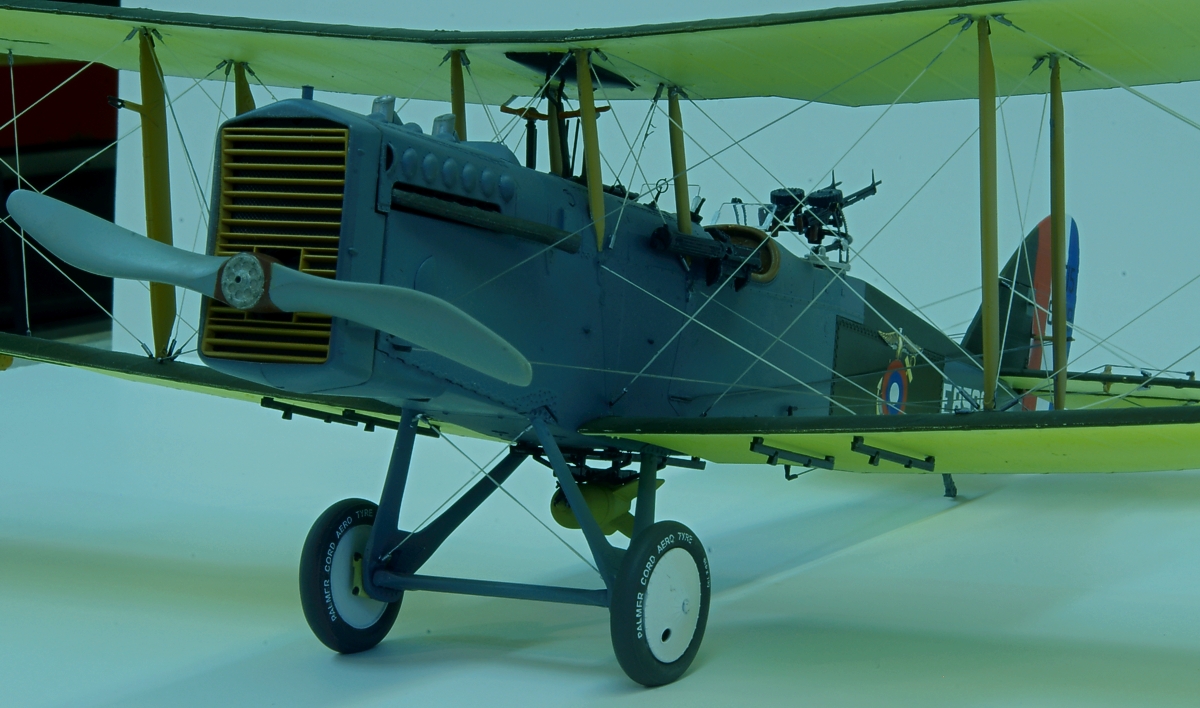
Cheers,
RichB
Just in time for prime day!WNW used Prym knitting-in elastic thread. PRYM 977 770 is the part number for a 200m spool of transparent thread. It is available from craft and sewing stores, Amazon, etc.
Cheers,
RichB
Thanks for the tips guys. I'm putting decals on right now, not going to bore you all with that. I hosed up the Red White and Blue rudder decal so I got to find some insignia red and blue. Can't find it in my shed, might have gave it away to someone.
Greg Kimsey
Well-known member
I have several colors of EZ line if you need some Bob @moon puppy
I got some black but I'm using fishing line on this one. I got some nickel rod that I may use for the structural wires.
RichB
Well-known member
Some trivia about the weakness of the Triplanes wings.
Those built by Sopwith were fitted with single streamlined flying wires, 0.625" wide. After the pilots saw several fold up in flight some had their aircraft modified to have the double flying wires (Collishaw was one of them). The aircraft that were built by the two subcontractors had undersized flying wires installed, only 0.375" wide. These were the ones that were mostly likely to folding up.
A story from No 8 NAS a pilot. After pulling out of a steep dive while engaging an Albastross two-seater he found the aircraft left wing heavy. He could only keep the aircraft level with full right stick. After landing and inspection it was found that the flying wires had stretched and were slack. A centre strut had also cracked. The only enemy damage was a single bullet hole in the lower left wing.
Cheers,
RichB
Those built by Sopwith were fitted with single streamlined flying wires, 0.625" wide. After the pilots saw several fold up in flight some had their aircraft modified to have the double flying wires (Collishaw was one of them). The aircraft that were built by the two subcontractors had undersized flying wires installed, only 0.375" wide. These were the ones that were mostly likely to folding up.
A story from No 8 NAS a pilot. After pulling out of a steep dive while engaging an Albastross two-seater he found the aircraft left wing heavy. He could only keep the aircraft level with full right stick. After landing and inspection it was found that the flying wires had stretched and were slack. A centre strut had also cracked. The only enemy damage was a single bullet hole in the lower left wing.
Cheers,
RichB

